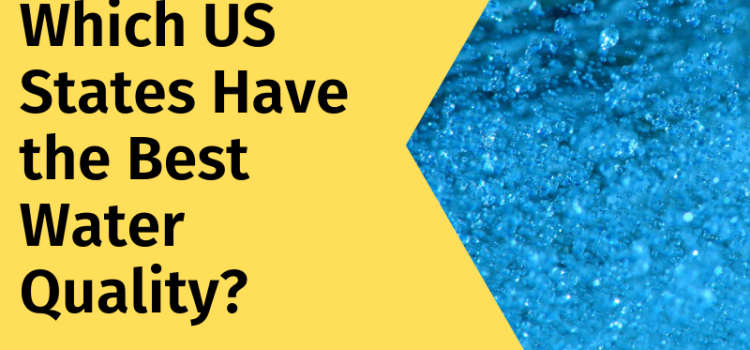Industrial Reverse Osmosis (RO) Systems from Ampac USA deliver high-volume, high-reliability purified water for demanding environments – manufacturing, energy, food & beverage, electronics, pharmaceuticals, marine, and municipal support. Built on rugged skids with continuous-duty components, advanced PLC/HMI controls, and optimized membrane arrays, these systems reduce TDS, hardness, silica, organics, microbes, and a broad spectrum of dissolved contaminants to consistently meet tight conductivity/TDS set points while lowering total cost of ownership.
Industrial Reverse Osmosis Systems – Overview
Industrial facilities need water that is predictable, compliant, and cost-effective. Ampac USA systems are engineered for:
- Large flow rates (from thousands to hundreds of thousands of GPD) with stable permeate quality.
- High recovery via antiscalant dosing and staged membranes, lowering reject volumes.
- Operational resilience with robust pre-treatment, conservative flux rates, and 24/7 monitoring.
- Rapid serviceability using modular, skid-mounted designs and standardized spares.
Reduced scale and corrosion, improved process yields, shorter rinse cycles, lower energy in boilers/chillers, and measurable OPEX savings.
Read More: How a Water Treatment Plant RO System Works
Industrial RO System Platforms
Engineered-to-order and standard skids provide:
- Flow: configurable to production needs (e.g., 6,000–100,000+ GPD per train).
- Frames: powder-coated aluminum or stainless steel with forklift pockets and lift points.
- High-efficiency pumps: end-suction or multistage, VFD-ready for gentle ramping and energy savings.
- Membranes: 8″ spiral-wound TFC elements configured in staged arrays for fouling control and target recovery.
- Instrumentation: inlet/outlet pressure, flow, conductivity/TDS, temperature, and optional TOC.
- Controls: industrial PLC/HMI with data logging, alarm permissives, remote I/O, and auto-flush routines.
- Safety: low-pressure cutout, high-pressure relief, leak detection, pump interlocks, and NEMA-rated enclosures.
High Purity Water Systems
For electronics, pharmaceutical, biotech, laboratory environments needing low conductivity and microbial control, Ampac USA integrates:
- Pre-treatment (multimedia, carbon, softening/antiscalant, 1–5 µm filtration).
- Primary RO sized to conservative flux.
- EDI (Electrodeionization) or MB polishers to reach sub-5 µS/cm to sub-1 µS/cm targets.
- Sanitary piping, UV/UF for microbial and endotoxin control.
Read More: When Is Ultra-Pure Water Necessary?
Mobile & Solar Water Treatment
For emergency response, military, offshore, remote mining, or pipeline construction sites:
- Trailer or containerized RO plants with plug-and-play utilities.
- Solar-assist or hybrid power where grid/diesel is constrained.
- Quick deploy manifolds, onboard storage, and rugged enclosures.
- Optional pre-treatment carts (UF, media, cartridge) for turbid sources.
Water Store Equipment
Commercial RO packages tailored for bottled water plants, bulk vending, and refill stations:
- RO production skids with hygienic design.
- Ozone/UV for bottling hygiene.
- Bottle rinsers, fillers, caps, and QC controls.
Industrial RO System’s Accessories & Consumables
Maintain uptime and quality with matched components:
- Sediment cartridges (1–5 µm), bag filters, housings.
- Activated carbon, multimedia, greensand.
- Membranes (8″ elements), pressure vessels, interconnectors.
- Pumps, valves, flowmeters, pressure transmitters.
- UV systems, storage tank vent filters, level controls.
Read More: How a Water Treatment Plant RO System Works
Water Treatment Chemicals
Right-sized chemistry extends membrane life and improves recovery:
- Antiscalants/antifoulants tuned to Langelier/Stiff & Davis indices and feed ionic loads.
- pH adjustment (acid/caustic) for optimal solubility and silica management.
- Disinfectants and biocides under controlled dosing and neutralization.
Water Quality Monitoring & Control
- Online TDS/conductivity with auto-divert on spec deviations.
- Permeate/reject flow balance and trending.
- DP across pre-filters and membranes to flag fouling early.
- Event/alarm logs with exportable data for audits.
- Remote access for diagnostics and optimization support.
Brackish Water Treatment Systems
Reduce TDS, hardness, iron/manganese, nitrate, and silica to meet process water or ingredient water specs. RO sizing is based on:
- Feed analysis (complete ionic profile, silica, SDI, turbidity)
- Target permeate quality (µS/cm or ppm TDS)
- Recovery (60–85% typical for brackish feeds)
- Temperature compensation and fouling risk
Water Reuse & Discharge Reduction
Rinse waters, cooling tower blowdown, or lightly contaminated streams:
- Pre-clarification/UF → RO → polish (if needed)
- Permeate returned to utilities; reject minimized via staged recovery or blending strategies
- Supports water stewardship goals and permit compliance
Ultrapure Pre-Treatment
RO is the backbone for EDI/DI when meeting sub-µS/cm specifications. Emphasis on:
- Bacteria/endotoxin control with UV/UF
- Sanitary design and hot water sanitization where required
- TOC monitoring for pharma/lab environments
Desalination & High-Salinity Feeds
For marginal or saline wells and coastal applications:
- Dual-pass RO or RO + energy recovery modules
- Antiscalant + pH programs to keep silica and sulfate scales in check
- Material selection for chloride stress corrosion resistance
Read More: Packaged Reverse Osmosis vs Traditional RO Systems
Emergency/Mobile Potable Supply
Rapid-deploy RO plants with integrated pretreatment, storage, and disinfection produce potable water during disasters, outages, or construction with operator-friendly HMIs and quick-connect utilities.
Industries we Follow:
- Food & Beverage / Dairy / Breweries: consistent ingredient water; shorter CIP/rinse cycles; improved taste and shelf life.
- Semiconductor & Electronics: low-conductivity water for rinses; particle and TOC control.
- Pharma & Biotechnology: RO + EDI + UV/UF for compliance with stringent quality frameworks.
- Oil & Gas / Petrochemical: boiler/chiller makeup, desalting, frac/produced water polishing (case-dependent).
- Automotive & Metal Finishing: spot-free rinsing, paint and plating line water.
- Power & Utilities: high-purity make-up prevents scaling and increases thermal efficiency.
- Municipal / Commercial Buildings: central RO for campuses, hospitals, resorts.
- Aerospace & Fastener Manufacturing: precise rinse quality for surface prep and finishing.
- Marine / Offshore / Seaports: containerized RO for bunkering and onboard processes.
- Agriculture & Hydroponics: nutrient stability via consistent feedwater.
Applications
- Boiler & Chiller Makeup: lower silica, alkalinity, and hardness for higher cycles of concentration and energy savings
- Ingredient & Process Water: stable taste/quality, reduced variability, better product yields
- Rinse & CIP: low-TDS water reduces spotting and detergent demand
- Water Reuse: reclaim rinse or blowdown streams to cut freshwater intake and discharge fees
- Pretreatment for EDI/DI: steady low-TDS feed to protect downstream polishers
Conclusion
Ampac USA is a specialist manufacturer of industrial RO Systems and commercial RO systems, desalination plants, and high-purity water solutions. The company’s philosophy blends application-specific engineering with serviceable designs that shorten downtime and extend asset life. From single-train skids to containerized and mobile solutions, Ampac USA supports global clients with engineering, commissioning, training, parts, and after-sales service.
Frequently Asked Questions
Q1. What determines RO recovery and permeate quality?
A. Feed chemistry (hardness, sulfate, silica), temperature, and membrane selection drive recovery and quality. We model scaling indices, select antiscalant or softening, and set pH to safely push recovery while holding salt passage within your spec.
Q2. How do I protect membranes from fouling and chlorine?
A. Use carbon or chemical dechlorination, maintain SDI < 3 through multimedia/UF pretreatment, and follow cartridge changeouts by DP. CIP with alkaline/acid/enzyme blends on a data-driven schedule.
Q3. Can RO integrate with EDI or DI for ultrapure water?
A. Yes. RO + EDI (and UV/UF) consistently delivers sub-µS/cm water for electronics, pharma, and lab applications. Control strategy includes auto-divert and TOC/bioburden considerations where required.
Q4. What power and utilities do I need?
A. Clean, stable power sized to motor FLA (often with VFDs), inlet pressure within design range, drain capacity for reject and CIP flushes, and ventilation for chemical storage. A level, accessible pad and floor drains simplify maintenance.
Q5. How often are membranes replaced?
A. Typical life is 3–5 years depending on feed quality, pretreatment effectiveness, flux, recovery, and adherence to CIP and sanitation procedures. Trending normalized permeate flow and salt passage helps plan proactive replacements.
Q6. Do you offer mobile or emergency RO plants?
A. Yes. Trailer/container units with onboard pretreatment, storage, and disinfection for disaster relief, military, offshore, and remote sites – including solar-assist where appropriate.











